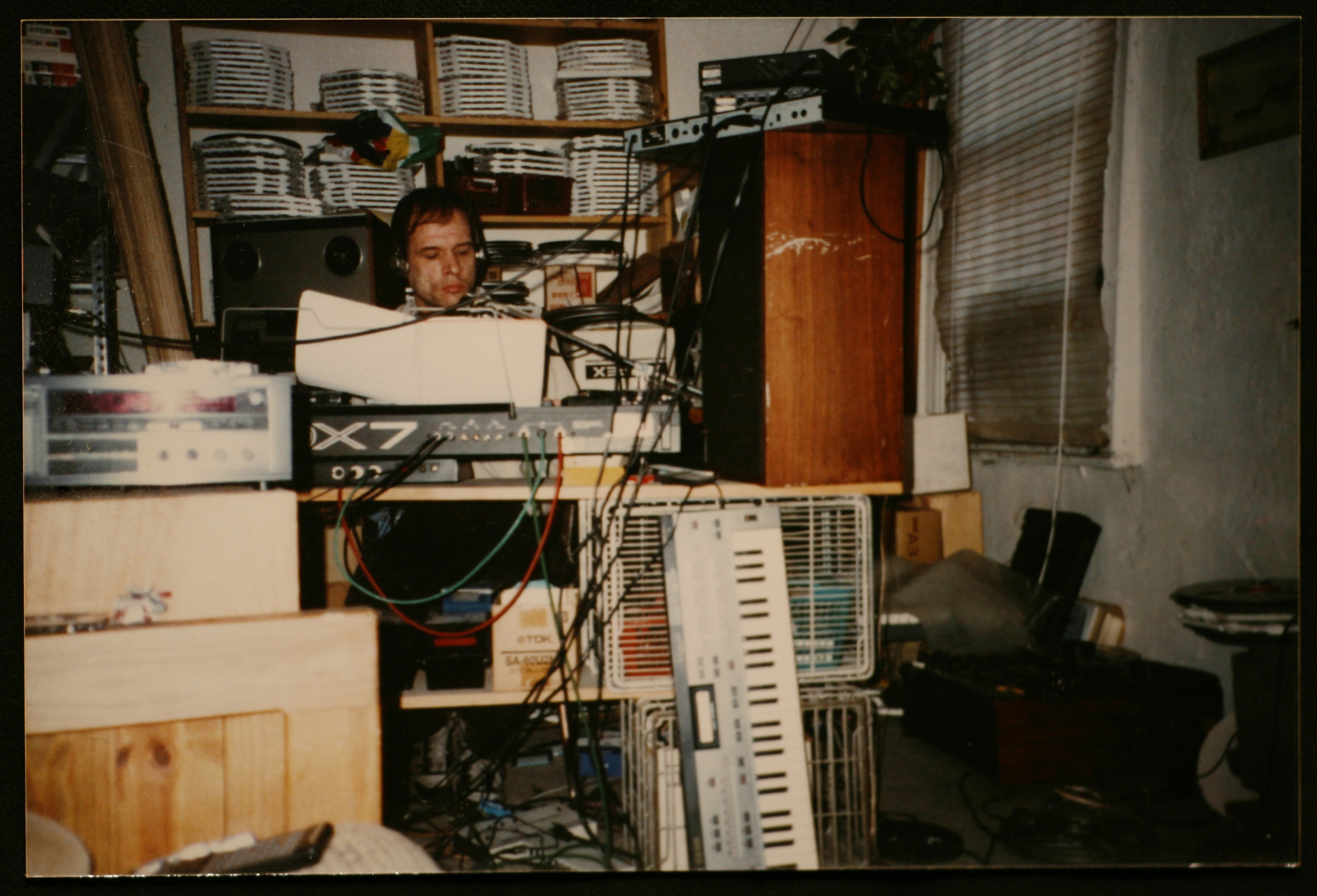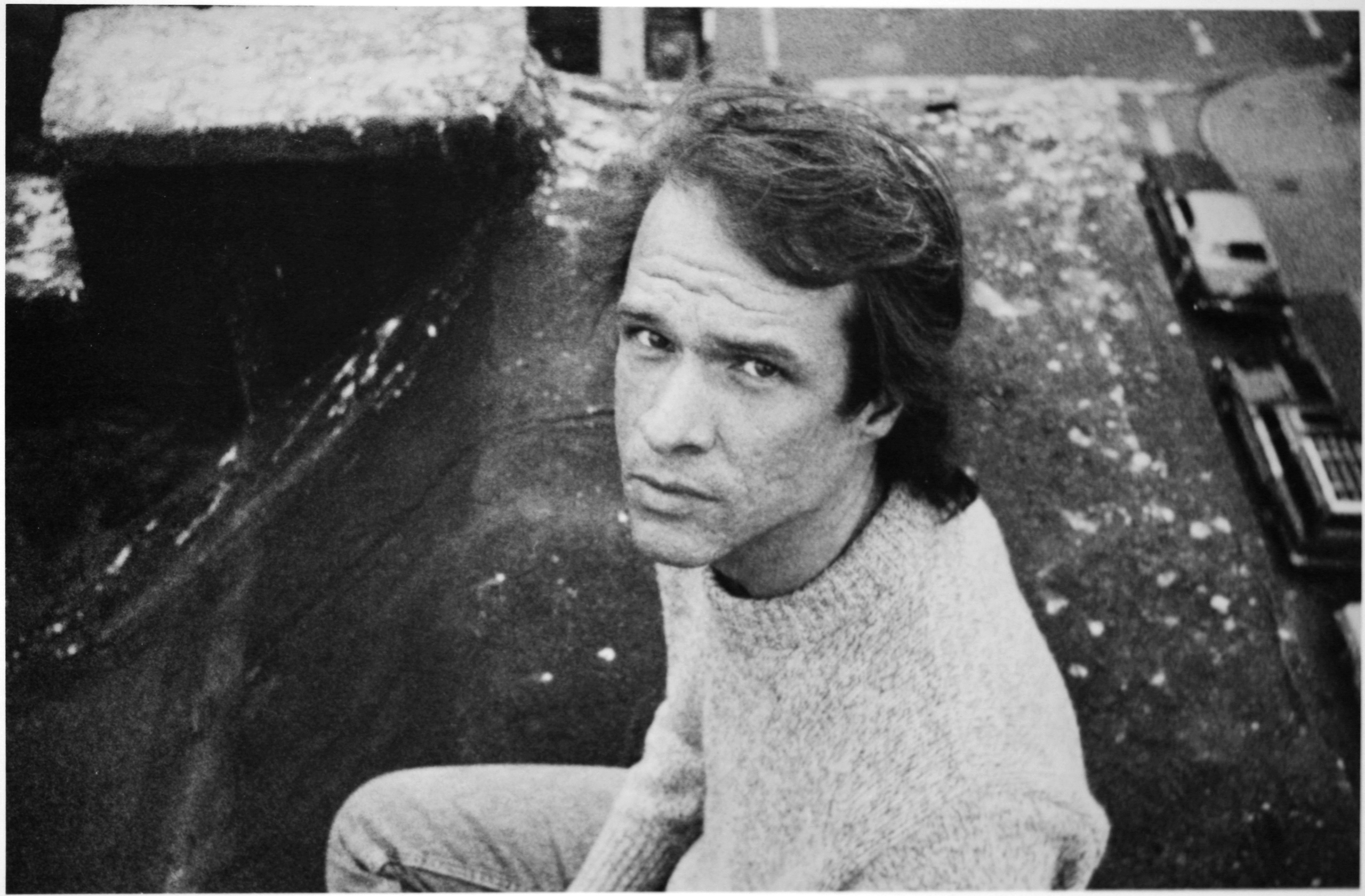Born and raised in Iowa, Russell started playing the cello and piano at an early age. He left for San Francisco at 18, moving into a Buddhist commune. Here he would study Indian classical music at the Ali Akbar College of Music and would soon meet beat poet Allen Ginsberg, with whom Russell would collaborate with and accompany, musically, at live poetry readings. Russell moved to New York and continued to study at the Manhattan School of Music but was soured by the experience, with his tutor calling one of his avant-garde compositions “one of the most unattractive things I have ever heard.” He soon ended up as Music Director of The Kitchen, an avant-garde performance space.
During his time as director (1974-75) he began to show his fondness for pop music, using his position as a platform to show that avant-garde and populism were not necessarily enemies, although his bookings of groups such as Talking Heads and the Modern Lovers supposedly triggered a series of grumblings amongst many within the avant-garde community. He would go on to work with members of both groups in the outfit The Flying Hearts, an ensemble that would exist throughout much of the rest of the decade. He also nearly became a member of Talking Heads and an early cut of the group’s classic ‘Psycho Killer’ features Russell on cello – Google it.
Russell would soon delve head first into disco, initially as an attendee at Studio 54 and soon as an innovative creator, under monikers such as Dinosaur, Dinosaur L and Loose Joints – the Larry Levan mix of ‘Is It All Over My Face’ would slay dance-floors during its tenure and would later go on to be one of disco’s most sampled records of all time. At this time, Russell was simultaneously working on various other solo and collaborative projects, marking the beginning of a rich musical period. Peter Zummo was one of these collaborators and would prove to be Russell’s longest-serving musical colleague and producer, with the two working together on almost all of Russell’s releases. He recalls the fertile – now legendary – time that was 1970s New York.
“I was one of many young adults who came to New York then, and maybe it was a Zeitgeist, but we felt free to find ourselves through creative and boundary-crossing activity, often with a foolish disregard for the necessity of earning a living,” Zummo tells me. “Of course, we were encouraged by the inspired generation – or half-generation, really – that preceded us: John Cage and his contemporaries among the musicians and composers, experimental dance, performance art, Fluxus, rock and roll, free jazz, Latin jazz, and the best and worst of mass media. At that time, though, the city itself was more the enemy than a civilised infrastructure for culture. Manhole-cover explosions in the street could spoil your lunch. Electrical blackouts and subway fires could spoil your whole day. However, the number of young artists was probably at least an order of magnitude lower than it is today, so we had a chance.”
Similarly, Tom Lee, Russell’s partner, recalls a magic in the air around that period. Reflecting on a Talking Heads concert that was the pair’s first ever date, he says: “As with many things, Arthur made casual mention that Ernie (bass player with The Flying Hearts) could get us into the Central Park show, probably part of the ‘Summerstage’ series of concerts, of The Talking Heads and B52s, who were both so hot then, the summer of ’78. We went and I remember being fairly close and star struck, thinking my friends were not going to believe this, but at the same time, I wasn’t exactly ‘out’ with all my friends, and so I thought about that side of things, too. It turned out that Arthur wasn’t ‘out’ to his musician friends as well. Nonetheless, word was that there was an after party at the Mudd Club and we could get in. Again, Arthur was not so good with leaning on others or taking advantage of social situations so we were relying on Ernie, or maybe someone from Sire Records, to get us in. So, we got in and it was so crowded that it was kind of a bust. That said, I was floating on air walking home along Lafayette Street to either mine or Arthur’s apartment afterwards.”
Whilst dabbling with a variety of collaborative musical experiments, “we shared an interest and background in Indian, Western classical, electronic, pop, rock, conceptual, jazz and other music, as well as in other media,” says Zummo. “We spent many afternoons sight-reading Christian Wolff’s Exercises in a basement rehearsal studio. We made crazy recordings and discussed aesthetics.”
Some of Russell’s most distinguished and haunting music came from moments spent alone experimenting with his voice and cello, which occasionally he would carry down to the Hudson River, simply sitting facing the water as he played. Russell’s cello work is almost frighteningly recognisable; the scratchy warmth that vibrates forth is instantly his, an almost submerging of the strings – streaks of watery echo-soaked pulses. His voice can shimmer from a strained whisper to a deep-set hum, it can send ground shaking rumbles through speakers as seamlessly and beautifully as ones that will shatter your windows – richness and warmth, sharpness and softness expertly blended.
Russell managed to create a bizarre concoction in almost mirroring his chosen instrument with his vocal ability, the two becoming a melded compliment, spinning around one another like dancing partners locked in a tight embrace, two individualistic units moving seamlessly as one. Friend and collaborator Phillip Glass perhaps said it most accurately: “This was a guy who could sit down with a cello and sing with it in a way that no one on this earth has ever done before, or will do again.”
Russell too was a fervent worker, obsessed with working on song after song (many of which remained unfinished) and being the impoverished musician he was Lee would loan him money to buy cassettes to record. “I have told the story of giving him money for cassettes as a way of demonstrating how sharing the intimate experiences of having a life together just gradually began to occur over time,” he says. “That said, his obsessive copying of quarter inch tape onto cassettes in order to listen to various takes of one song was the method in which Arthur worked. It was a routine for him in order to consider the different takes of a song, or the addition of a particular instrument or vocal on a track – this was just a way in which I helped to serve as a conduit to that end. When I listen to some of those cassettes now I am transported back in time because they represent the working versions of songs.”
“He was funny, serious, driven, meticulous and never tame,” Zummo tells me when discussing Russell’s working methods and the personality traits accompanying them. “He was reserved and had a sense of propriety that was sometimes almost Victorian. Arthur’s capacity for taking in and processing information was formidable. His sense of social and interpersonal interaction was lively. He could be difficult, as were we all. If Arthur had a criticism of a colleague’s work or project, he felt the person would want to hear it, however uncomfortable or unsolicited the advice was. [However] first and foremost, he was a great musician and composer. And we should never forget that Arthur wrote his music. A written musical piece is distinct from a performance or a recording of it. I often wonder whether people currently putting out their versions of his work have access to his original manuscripts. Or are they transcribing from various recorded versions? If the latter, they’ll end up with an interpretation of an interpretation. Vital information can be lost in the process. I’m a fan of going to the source, which includes the written music, as well as the recordings.

